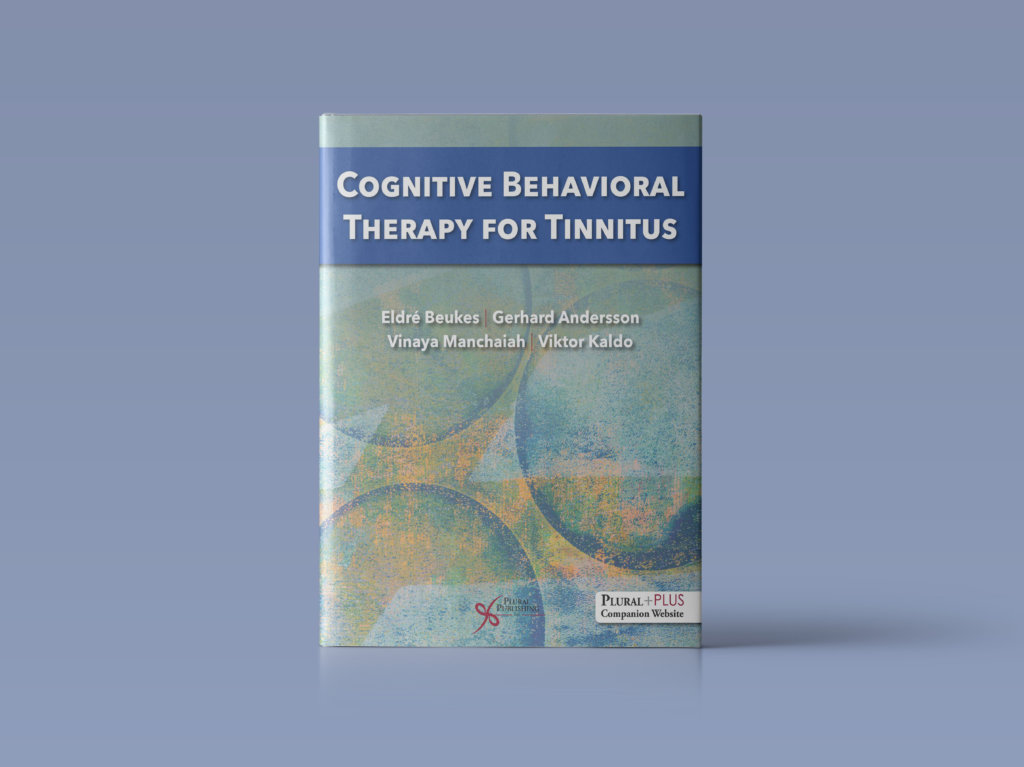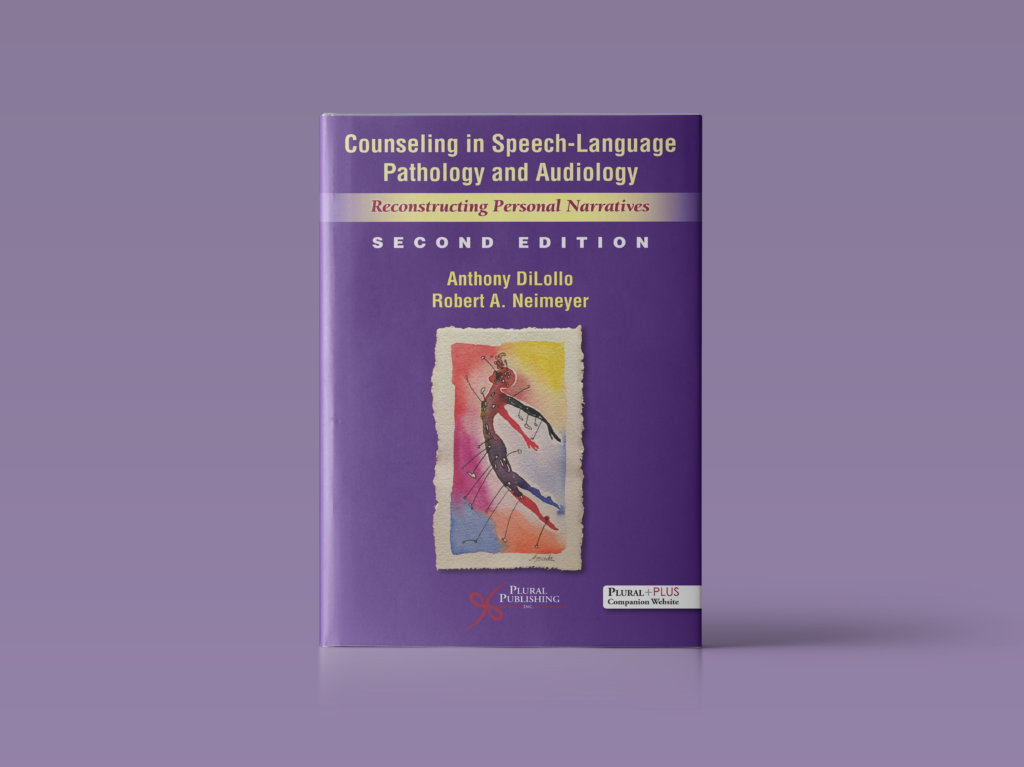Book Review

Cognitive Behavioural Therapy for Tinnitus
Reviewed by Calvin Staples
As a clinical audiologist who, like many of us, has worked with tinnitus patients and someone who has also attempted to seek new forms of treatment or therapy for tinnitus suffers, the opportunity to review the textbook Cognitive Behavioural Therapy (CBT) For Tinnitus was welcomed. The text review provided an experience to analyze gaps in my own clinical approach and learn specific techniques to help the tinnitus sufferer. The textbook does a wonderful job providing some insight into the foundations of CBT, the foundations of CBT as an approach to tinnitus therapy, and provides several opportunities to expand the ability to help manage tinnitus. The textbook focuses on CBT but does provide brief summaries of various other strategies that have some evidence in helping tinnitus sufferers. The author acknowledges CBT appears to be positioned well for the tinnitus sufferer because of the relationship between auditory stimulus and psychological distress. The contents within the book appear directed at the tinnitus sufferer, so as a clinician, this required a shift in my own thought processes – this was a good experience. I appreciated that the textbook acknowledges the goal of most tinnitus sufferers is to eliminate the tinnitus, which is highly unlikely in that there is no one size fits all approach. The authors of the text suggest the use of CBT for tinnitus can improve quality of life. Hearing healthcare professionals (HCPs) should recognize two primary tinnitus managing approaches: sound therapy – targeting the tinnitus percept and addressing reactions to the tinnitus – psychological interventions; often successful management of tinnitus occurs when both strategies are used
The authors quickly help the reader (possibly the tinnitus suffer) learn to plan and identify the problems associated with tinnitus and move into acknowledging tinnitus is unlikely to be removed. Clinical audiologists recognize patients attending appointments lookinging for a cure. The recognition that there is no cure for tinnitus sets the tone for the therapy goals of CBT for tinnitus. Often the missing element from an audiological approach to tinnitus management is how to move a patient from looking for a cure to acceptance and beginning the steps that encompass a psychological process of CBT. The approach found in the textbook might work when directed at the tinnitus sufferer who is in the acceptance stage, but as a clinician, a gap still exists in helping the patient move to the acceptance stage; especially for an inexperience HCP or any untrained in the psychology approaches to help tinnitus suffers.
Early in the textbook, the author is quick to address the schedule and expectations of CBT when used with tinnitus. The HCP or tinnitus sufferer can clearly see the steps and the approach required before proceeding with the therapy – the author acknowledges CBT is a collaborative approach between the clinician and the client. I really appreciated the outline, formula, and directness in learning to accept, live with and attempt to control the tinnitus. In this program, the patient's ownness is on the patient with support from the clinician to set goals and then try to achieve the agreed-upon goals through a collaborative approach. In a patient assessment, any comorbidities or contraindications must be determined – the author provides a nice summary of the various questionnaires that might be included in a tinnitus assessment. The use of the appropriate scales or surveys might help monitor the impact of the tinnitus and treatment or therapy outcomes. A summary table is provided to display the elements of a successful CBT program, which includes all the standard components. However, the table provides a guideline that can give some notion about the time investment and support required for each element. Chapters 4 – 25 are the details of each component of a CBT program for tinnitus.
Unfortunately, with the early acknowledgement of an inability to eliminate tinnitus, the CBT approach is only available to those ready to accept the tinnitus management program. The remainder of the textbook walks through the usual components of any tinnitus management program; positive imagery, deep breathing, relaxation, sleep guidelines, and managing thoughts. In each of these chapters, the authors provide an overview, diagrams, charts, and worksheets for the patient, consistent with most routine tinnitus management programs. The design and detail in each chapter should facilitate the initial informational counselling and education for the patient. In terms of particulars, the textbook thoroughly covers relaxation techniques. The options presented were numerous, specific, and detailed – the textbook has provided an extensive number of tools to help with relaxation. When completing the muscle group relaxation techniques, the tinnitus sufferer should pay attention to any movements that might trigger a change in their tinnitus – this was not mentioned in the text. Still, there are somatosensory contributions that might link to the tinnitus percept.
Another interesting area in the text focused on conscious listening to tinnitus. Conscious listening has been offered as a modality to help acceptance. The “how-to” and “benefits to” listening to tinnitus will allow the reader to tread into this area of acceptance - as noted in the text conscious listening can be a scary experience for the tinnitus sufferer but is thought to provide another step towards gaining control over tinnitus. The sleep guidelines chapter is the final chapter discussed in this review. The textbook provides a simple background on sleep phases and cycles and links this to how sleep can be disrupted and factors that influence sleep. As in all the chapters some helpful hints and guidelines can help the tinnitus client gain control over their lost sleep – there are firm guidelines here to follow.
In general, I believe this textbook was a worthwhile read, provided some interesting insight, provided confirmation of current approaches, and some new techniques that might help the tinnitus suffer. I think this textbook could serve as a useful therapy tool, and when coupled with a sound audiological approach, improvements in tinnitus management could be possible.

DiLollo, A. & Neimeyer, R. A. (2022).
Counseling in Speech-Language Pathology and Audiology:
Reconstructing Personal Narratives (2nd Edition). Plural Publishing Inc.
Reviewer:
Sheila T.F. Moodie, Associate Professor,
Western University, Faculty of Health Sciences,
School of Communication Sciences & Disorders, London, ON, Canada
The 360-page comprehensive text Counseling in Speech-Language Pathology and Audiology: Reconstructing Personal Narratives (2nd Edition) should be required reading for students in Audiology and Speech-Language Pathology. It provides a wonderful, thoughtfully written, well-referenced text and associated learning opportunities for students and clinicians’ alike. The authors bring their years of experience as educators to write about an up-to-date, evidential approach to counseling in a well-structured way. Each chapter scaffolds learning, and application of knowledge acquired. The case examples are reflective of common clinical encounters.
The authors reinforce several important aspects of counseling and reiterate them throughout the text. The first is that “... counseling can be seen as a way of being with clients rather than a set of skills or techniques. .. It implies that counseling is woven into the fabric of what audiologists and speech-language pathologists do and is not something that is added to “regular” therapy …” (p. 5). The authors reinforce for students that the best clinical care “starts where the clients are, not where we are” (p. 120). Finally, a well-developed theoretical framework (the StAAR framework) is provided and built upon throughout the text that reinforces that counseling within speech-language pathology and audiology must attend to the client’s story (St), clinician attitudes (A), therapeutic alliance (A), and reconstructed narratives (R). The text includes discussions about the World Health Organizations International Classification of Functioning, Disability and Health, and the Transtheoretical Model of Change.
There are four sections in this well-organized text: Part I: An introduction to the StAAR framework for counseling in speech-language pathology and audiology; Part II: Foundations for Successful Counseling where the authors reinforce the importance of integral components of practice such as critical thinking, culturally informed care, listening, and understanding and using change processes; Part III: Case illustrations of counseling in action; and Part IV: The Clinician’s Toolbox.
What I find especially helpful and wonderful about this text is that it provides rich, “thick descriptions,” highlights case examples and provides 13 “clinician’s tools” with instructions for their application(s) in separate chapters that clinicians can have in their “toolbox” for everyday clinical practice.
The text includes a companion website for students and instructors with videos, PowerPoint slides, and instructor materials to facilitate teaching and learning. These materials are helpful because some of the visuals in the text are small.
In summary, Counseling in Speech-Language Pathology and Audiology: Reconstructing Personal Narratives (2nd Edition) is a current and much-needed resource for audiology and speech-language pathology and reflects current, desired evidence-based practice. It will help students, clinicians, and educators to combine evidence-based practice in counseling, with their expertise and a client’s preferences and values to provide better audiology and speech-language pathology care across the lifespan.

